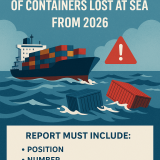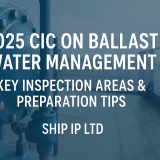Volkswagen Group continues to endorse liquefied natural gas as a fuel and has chartered two more LNG-powered vehicle carriers as part of its efforts to decarbonize its operations.
The company is already using two LNG-powered car carriers hired from Siem on the trans-Atlantic route known as the America Round Tour, which connects Germany’s Emden with Mexico.
When SFL Corporation Ltd released its preliminary financial results for the first quarter in late March, one of the highlights was an agreement to build two 7,000 CEU LNG dual-fuel car carriers in conjunction with 10-year charters to the Volkswagen Group.
Volkswagen will add two additional LNG-powered car freighters beginning in 2023 as part of a 10-year charter agreement inked with SFL Corporation.
For the first time across the world, it was the German conglomerate Volkswagen Group who transported automobiles from Europe to North and Central America aboard on a car freighter fueled by liquefied natural gas (LNG). SIEM CONFUCIUS carried over 4,800 vehicles to North America, making it the world’s first LNG-powered car transporter of this magnitude.
To recall, billionaire John Fredriksen’s shipping business announced on April 28 that it will charter two newbuild LNG-powered car carriers to a major European vehicle manufacturer without disclosing any additional details.
Volkswagen has officially been confirmed as the charterer of the 7,000 CEU vehicle carriers that will be constructed in Guangzhou Shipyard International (GSI) based in Nansha, China.
Volkswagen will charter SFL’s two current car carriers, SFL COMPOSER and SFL CONDUCTOR, before the arrival of the newbuilds. The two vessels will be propelled by biofuel, which SFL and the Volkswagen Group emphasize utilizing in their collaboration.
SFL had stated that the purchase will add more than $200 million to its fixed-rate charter backlog.
The Volkswagen Group’s LNG drive is significant as it decreases CO2 emissions by up to 25%, nitrogen oxide emissions by up to 30%, soot particles by up to 60%, and sulfur oxide emissions by up to 100%.
SOURCE READ THE FULL ARTICLE https://www.fleetmon.com/maritime-news/2021/33901/volkswagen-set-add-two-lng-powered-car-carriers-it/









